
In the heart of the Mediterranean, Corsica and Sardinia, two enchanting islands, captivate travellers seeking an unforgettable escape. Both destinations are renowned for their awe-inspiring landscapes, fascinating culture, and warm hospitality, yet they offer distinctly different experiences.
Corsica, known as the Isle of Beauty, is a haven for those drawn to rugged wilderness, secluded beaches, and an authentic, laid-back atmosphere influenced by eventful history and French traditions. Adventure seekers and nature lovers looking for immersive moments amid untamed scenery will feel right at home.
In contrast, with its extensive coastline and vibrant resorts, Sardinia manifests a more international flair, deeply rooted in Italian culture. A perfect place for a relaxing seaside getaway, accompanied by delicious food and interesting sightseeing.
In this article, I will guide you through the key differences between these glorious locations to help you choose the destination that best fits your vision of a perfect Mediterranean retreat. Which island will you fall in love with?
This page contains affiliate links meaning I get a commission if you decide to make a purchase through my links, at no extra cost to you. Click here to learn more.

CORSICA IN A NUTSHELL
Corsica is known for its diverse, awe-inspiring landscapes that form a truly unique natural wonderland. Within its territory, you will find towering, snow-capped mountains, verdant river valleys peppered with emerald pools, ancient forests, and a versatile coastline sheltering pristine beaches. Outdoor enthusiasts are spoilt for choice with innumerable activity opportunities, from hiking, canyoning, and cycling, to snorkelling, diving, and windsurfing.
The island’s picturesque towns and villages exude authentic charm, shaped by a Mediterranean lifestyle that has nurtured a proud and independent community. Corsican culture, forged by centuries of hardship and resilience, is a marvellous medley of time-honoured traditions, language, music, and festivals that reflect the island’s distinct identity and history. The local cuisine, rooted in pastoral heritage, offers mouthwatering, hearty dishes and superb wines that delight the senses.
For holidaymakers, Corsica provides an intimate escape amidst some of Europe’s most spellbinding scenery. Considered an upscale, moderately-priced destination, it offers a refreshing alternative to mass tourism, brimming with adventure, charm, and genuine local flavour.
WHO IS CORSICA FOR?
- Nature lovers
- Outdoor recreation enthusiasts
- Adventure seekers
- Off-the-beaten-path explorers
- Active families
- Couples
- Wine lovers
- Luxury getaway seekers
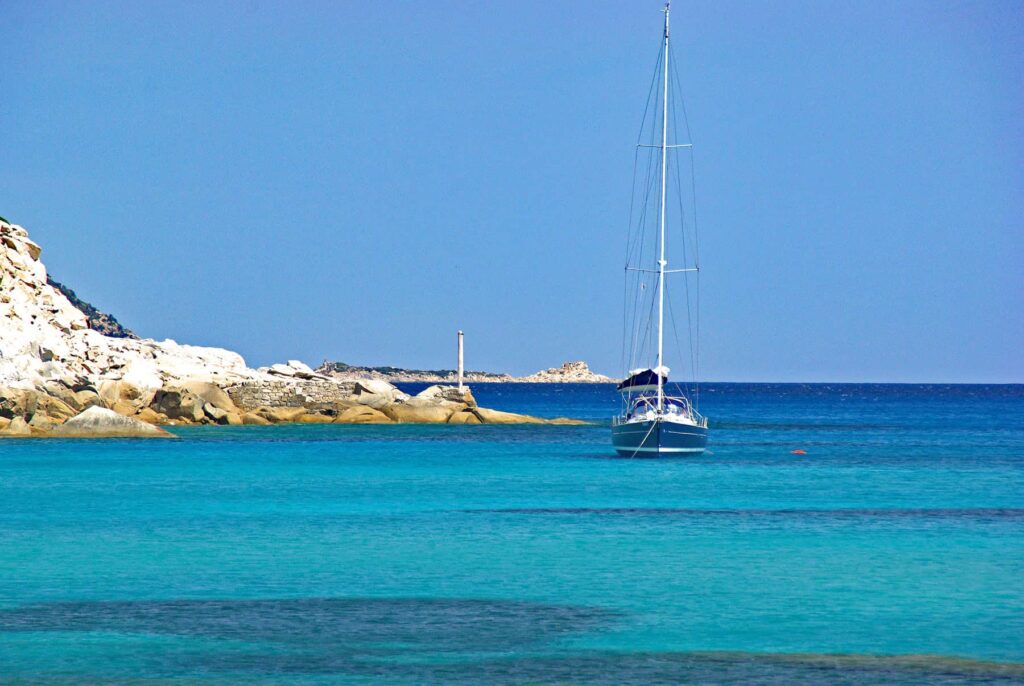
SARDINIA IN A NUTSHELL
Sardinia embodies Mediterranean splendour, seamlessly blending endless azure seascapes with a vibrant culture and spirited Italian hospitality. Its strategic location between Europe and Africa has shaped a unique identity, evident in the island’s captivating folk traditions, unique dialect, colourful festivals, and prehistoric monuments.
Above all, Sardinia is a magnet for visitors seeking its breathtaking beaches, ranging from expansive sandy bays and secluded coves to family-friendly shallow lagoons. The island’s crystal-clear waters provide world-class conditions for water sports enthusiasts, offering an exhaustive range of fun activities. Along the picturesque coastline, charming towns invite exploration with their historical monuments, castles, and churches. Inland, Sardinia’s rugged landscapes contrast with its serene coastal allure.
The island is also known for its great cuisine. Fresh seafood, handmade pasta, and unique local specialities like porceddu (roast suckling pig) delight food lovers. Dining in lively trattorias and restaurants is often affordable, with menu turistico offering excellent value.
Compared to Corsica, Sardinia is more accessible in terms of travel costs, providing a Mediterranean getaway that suits all budgets. At the same time, it offers a more commercial holiday experience with a well-developed tourist infrastructure and larger hotel complexes.
WHO IS SARDINIA FOR?
- Beach worshipers
- Families with small children
- Watersports lovers
- Sightseeing enthusiasts
- Newlyweds
- Travellers on a budget
- Luxury holiday seekers
- Foodies
PLANNING A TRIP TO CORSICA? CHECK THESE RESOURCES!
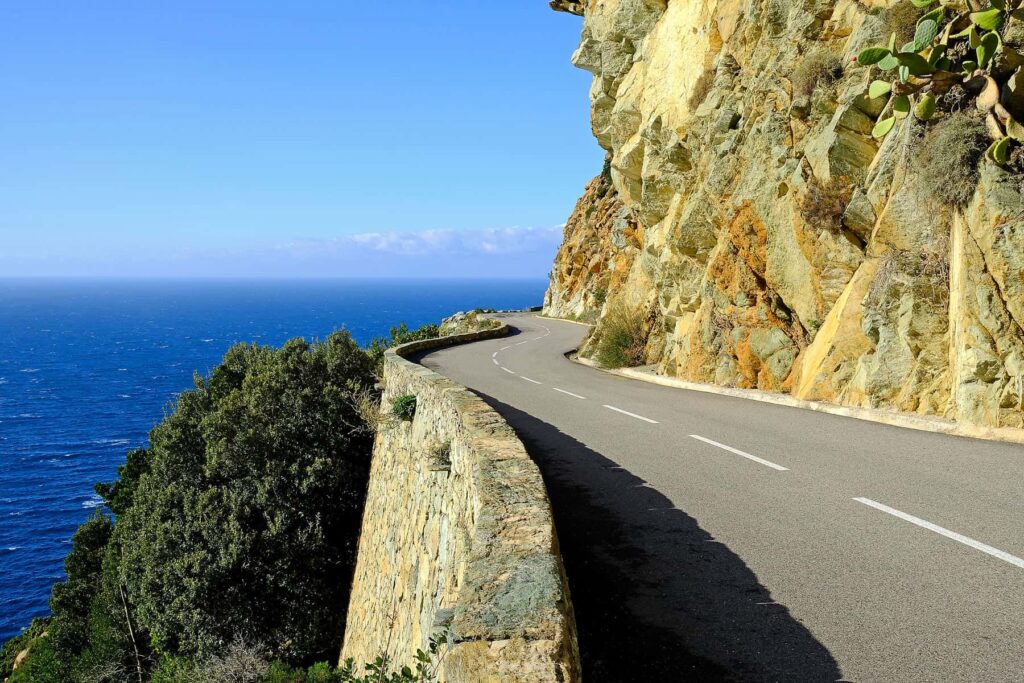
Rent Your Car
Find the perfect car for your Corsica trip at the best price.

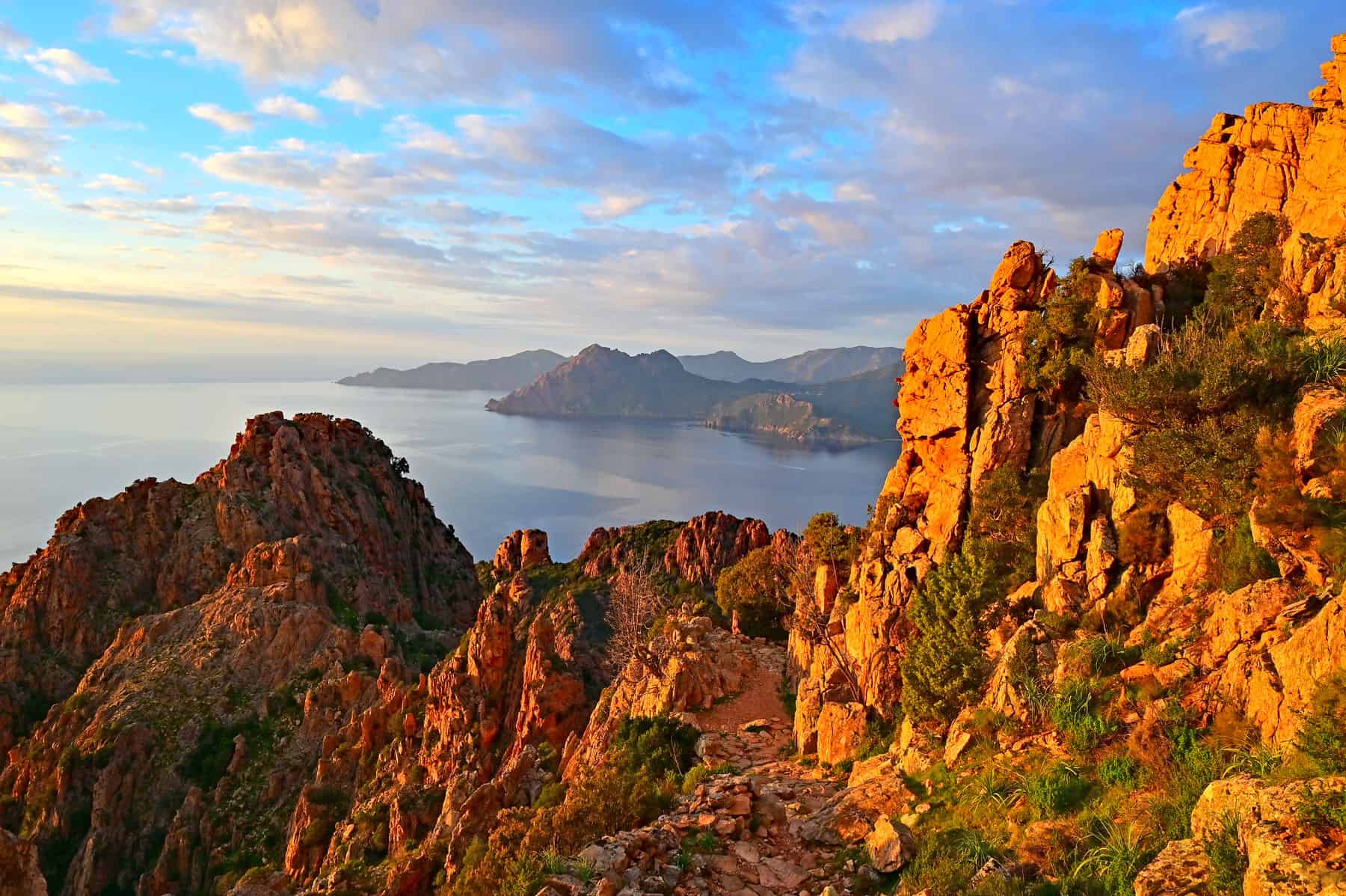
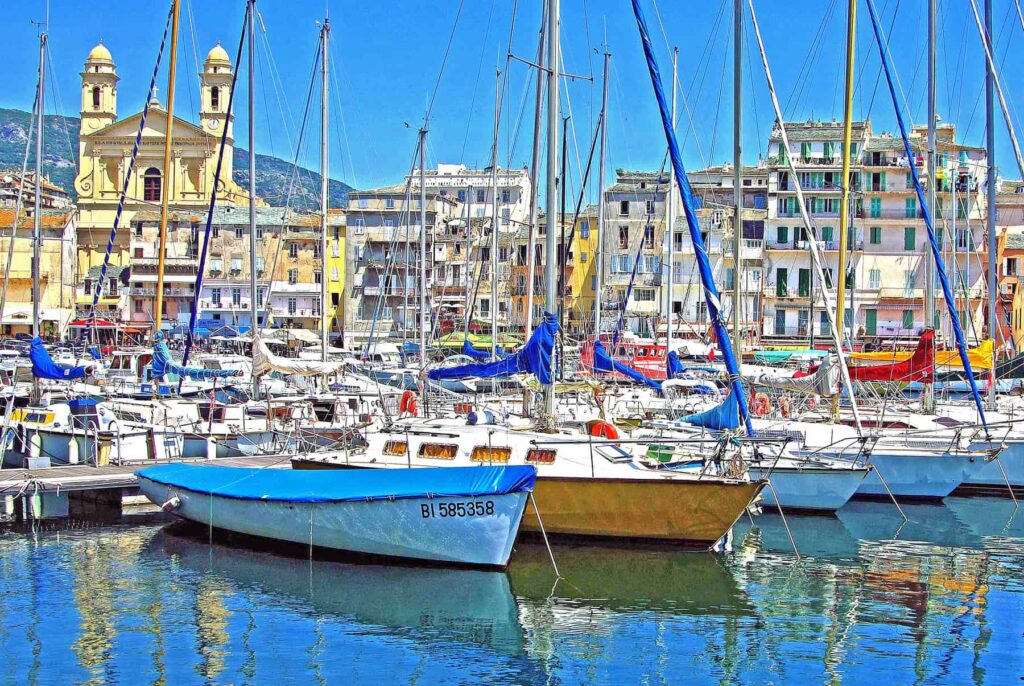
SIZE, TOPOGRAPHY AND POPULATION
CORSICA
Corsica, the fourth largest Mediterranean island, stretches 183 km in length and 83 km in width, covering over 8600 km². It boasts a surprisingly rugged topography dominated by high granite mountains that take up two-thirds of the territory. The highest peak, Monte Cinto, rises to 2706 meters. The coastline stretches over 1000 kilometres, featuring wild sandy beaches, rocky coves, and dramatic porphyry cliffs. This versatile terrain supports exceptionally diverse landscapes, from dense forests and lush valleys to dramatic canyons where rivers form cascading waterfalls and sapphire-hued natural pools.
Corsica is a sparsely populated island with a total number of inhabitants just above 350.000. About half its population lives in the island’s two biggest cities, Ajaccio, Corsica’s lively capital, and Bastia.
SARDINIA
Sardinia is the Mediterranean’s second-largest island, spanning 24000 km², making it nearly three times bigger than Corsica. Its rugged terrain is predominantly mountainous and hilly, with the highest peak, Mount La Marmora, reaching 1834 meters in the Gennargentu massif. The Campidano Plain, stretching from west to south, divides the mountainous regions. Sardinia’s 1800 km coastline is dotted with magnificent beaches and coves, indenting rocky shores that often form high cliffs.
With approximately 1.600.000 people, Sardinia has a considerably larger population than Corsica and feels more developed. A significant portion of inhabitants are over 65 years old.
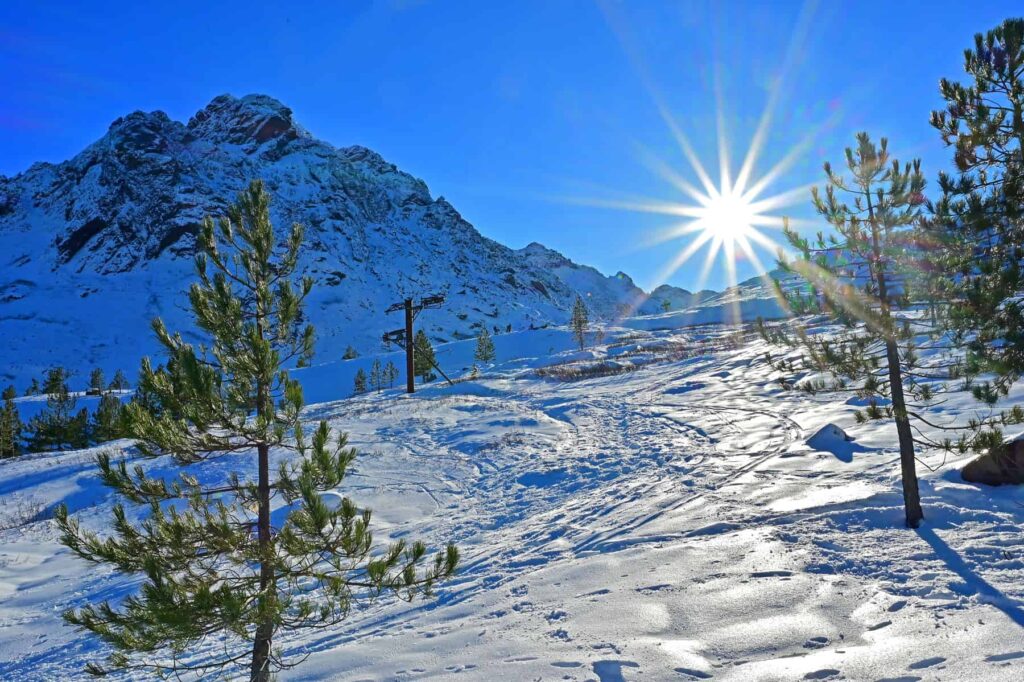
CLIMATE
CORSICA
In its coastal areas, Corsica features a Mediterranean climate with hot, dry summers and mild winters. Abundant sunshine and a persistent sea breeze assure pleasant conditions for outdoor recreation year-round. In summer, temperatures may exceed 30°C while seawater is balmy, granting comfortable swimming. Luckily, temperatures drop at higher elevations, allowing holidaymakers to escape the heat by heading into the mountains. Although mild, the Corsican winters are wet, with the highest precipitation from December to February.
Interestingly, the island’s mountainous terrain introduces significant climatic variations with altitude. Above 800 meters, the climate becomes distinctly alpine, with frequent snowfall in winter. When reliable conditions occur, Corsica’s small ski stations open their slopes, and innumerable trails attract snowshoeing enthusiasts.
SARDINIA
Sardinia boasts a typically Mediterranean climate characterised by mild, wet winters and hot, sunny summers. The coldest month is February, with temperatures ranging from 5-15°C. In July and August, they often exceed 30°C. The island experiences moderate precipitation, with less annual rain than in Corsica. November is the wettest month. Sea temperatures peak at 25-26°C in August and September, making it ideal for swimming.
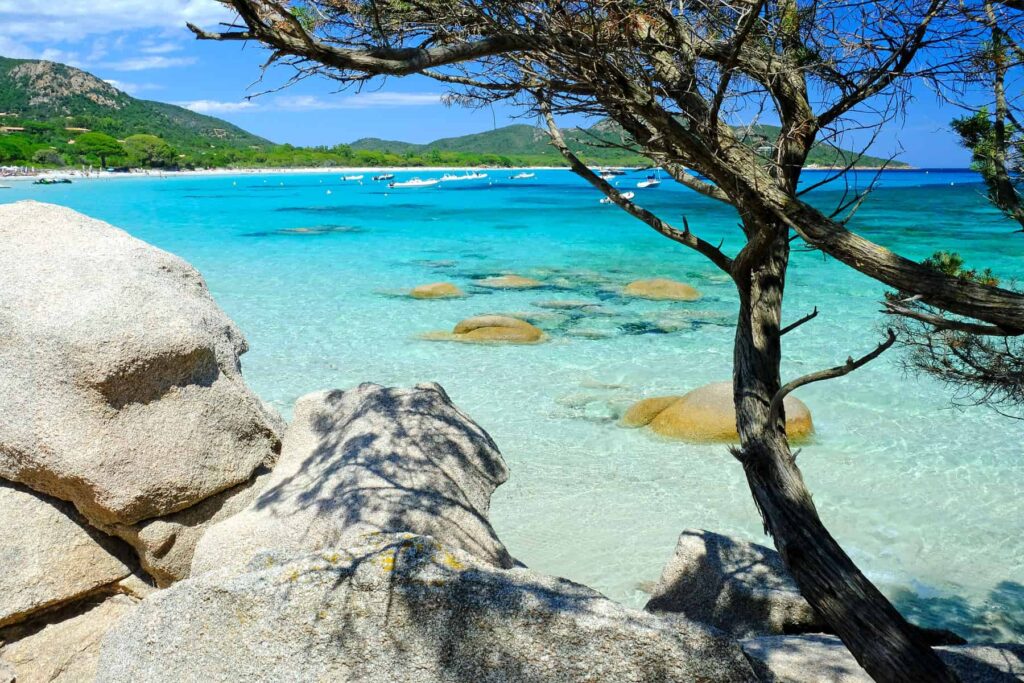
BEST TIME TO VISIT THE ISLANDS
Both islands are fabulous all year round, but the best time to explore their sunny shores is late spring- May and June, and September. During these months, temperatures are pleasant, without being too high, crowds are considerably smaller than in summer and travel costs remain fairly low. Many tourist facilities shut at the end of October to reopen around the Easter holidays.
Peak tourist months, July and August, are great for enjoying watersports and refreshing dips in Corsica’s cool rivers, but expect hot weather, larger crowds and higher prices.
To encounter snow in the Mediterranean, visit Corsica in winter. Although it’s not a typical low-season destination, the island’s unspoiled charm will undoubtedly enchant nature lovers.
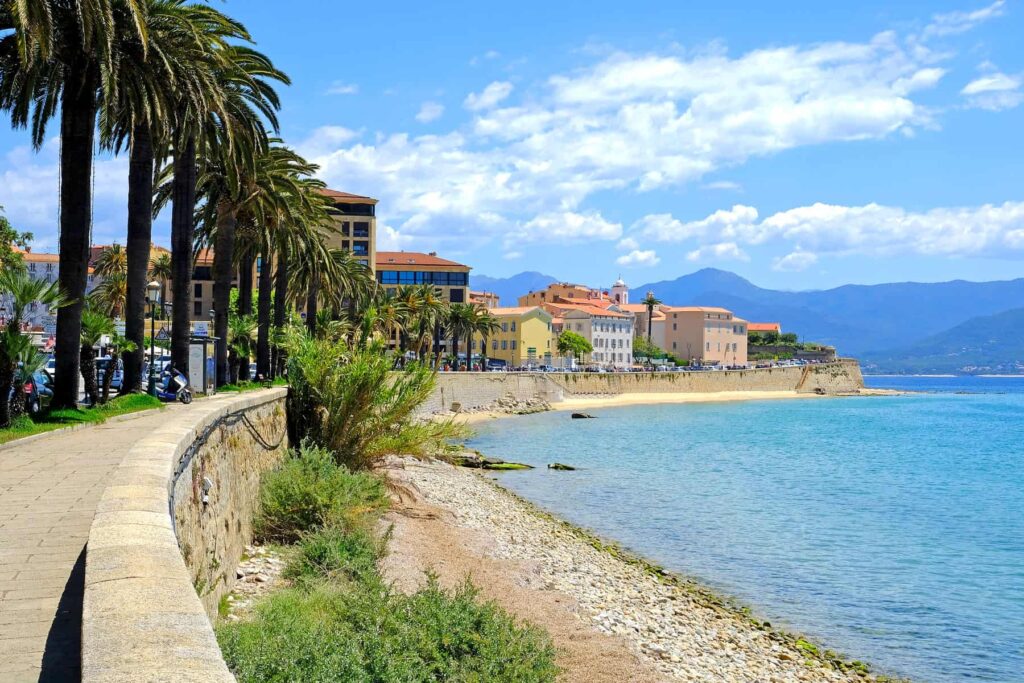
LANGUAGE
CORSICA
Since 1769, Corsica has been part of France, and French is the island’s official language, spoken widely by the whole population. However, Corsu, the Latin-based Corsican native language, holds particular importance for the inhabitants and is taught in schools and at the University of Corte. Sharing similarities with Italian, it has two main dialect groups, Northern Corsican and Southern Corsican, each with specific characteristics. In rural areas, you can often hear the melodic, rich-in-vowels Corsu, used in informal situations or traditional polyphonic singing.
The Corsican native language is classified by UNESCO as ‘endangered’, and since the 1970s, active efforts have been focused on its revival.
HOW TO COMMUNICATE IN CORSICA?
To communicate effectively during your vacation in Corsica, French remains the most reliable option. However, English is spoken by professionals in major towns, particularly in hotels, restaurants, and cultural institutions. Interestingly, many locals also understand Italian due to its similarity to the native Corsican language. But fear not, Corsicans will be willing to assist you even when language barriers arise, making communication challenges less daunting.
SARDINIA
Although Italian is the dominant language in Sardinia, used in education, media, and official contexts, the island is linguistically diverse, with several dialects spoken across its territory. The primary local language is Sardinian (Sardu), often used in informal and social situations. Depending on a geographical position, it has variations. Surprisingly, the population of Alghero still uses Catalan due to the region’s historic ties with Spain.
HOW TO COMMUNICATE IN SARDINIA?
The locals are most comfortable using Italian (or a regional dialect), but English is spoken in tourist areas within major cities. In rural locations, where Sards primarily use their native language, don’t hesitate to rely on gestures and body language for communication. The residents are known for their warmth, hospitality, and welcoming nature, and they will often go out of their way to accommodate your needs.
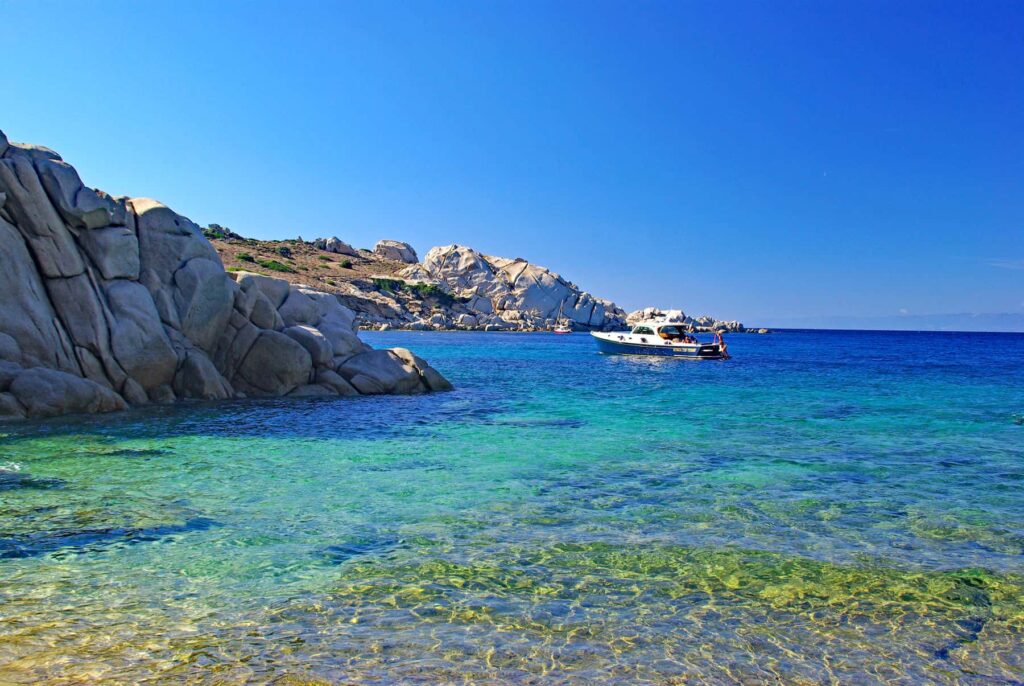
BEACHES
CORSICA
Corsica’s diverse 1000-kilometre coastline is home to over 200 exquisite beaches known for their exceptionally clear waters and abundant marine life. Unspoilt, undeveloped and immersed in fragrant vegetation, they are often located within protected natural areas where free-from-construction surroundings grant a close encounter with wild Mediterranean scenery in all its splendour. In Corsica, you won’t find rows of sun loungers lining sandy stretches, but discreet beach bars and restaurants will provide all necessary comforts. Watersport centres are popular and easily accessible in all parts of the island’s coast.
Famous beaches such as Palombaggia, Santa Giulia, Roccapina, Rondinara or Cupabia offer Caribbean-style turquoise bays and powder-soft white sand, while the pristine coves around Porto seduce with their dramatic setting under tall granite cliffs. Some of the most paradisiacal places, such as the beaches of the Agriates, require hiking, a boat trip, or a 4×4 transfer, services offered by numerous local providers. The most family-friendly spots are around Porto Vecchio, Ajaccio and in Balagne, with the beach of Calvi being the most popular. Lavezzi Islands, a protected archipelago located off Corsica’s south coast, are a great place for snorkelling.
SARDINIA
Sardinia’s coastline is a treasure trove of natural beauty, boasting 1800 km of diverse seascapes and an endless succession of stunning beaches. From rugged cliffs to secluded coves and expansive sandy lagoons, everyone can find their ideal waterfront retreat. Most beaches have excellent facilities, with bars and restaurants, where you may rent sun loungers with a parasol. Watersports lovers can choose from a wide range of attractions and activities, such as windsurfing, kayaking or jet skiing.
Popular spots include La Pelosa in Stintino, Liscia Ruja on the VIP-frequented Costa Smeralda, Chia on the south coast, Piscinas on Costa Verde, or Cala Corsara, situated in the Maddalena archipelago. Most beaches are easily accessible, while others, like the sublime Cala Goloritzè, require a boat trip, adding to their allure as hidden gems. Due to the magnificent beach infrastructure, families with small children are particularly fond of Sardinia’s sunny shores.
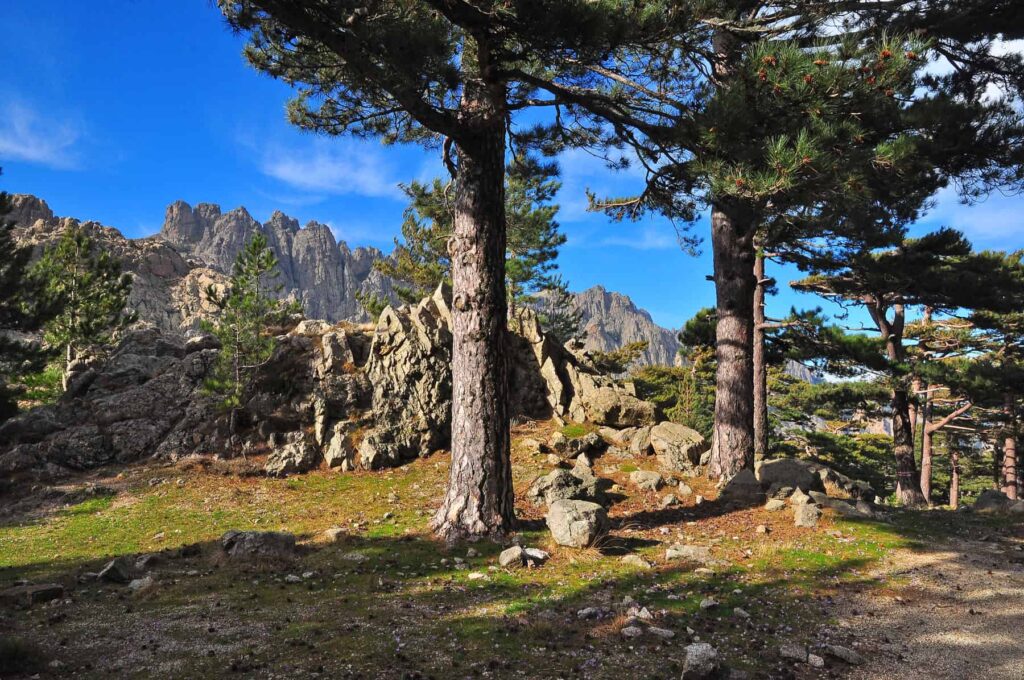
MOUNTAINS
CORSICA
Corsica is one of the best European destinations for mountain lovers with seven main massifs, including Monte Cinto, Monte Rotondo, Monte Renoso and Monte Incudine, rising high from the Mediterranean’s cobalt-blue waters. The highest peak, Monte Cinto, stands at 2706 meters, but the island actually boasts over 120 summits exceeding 2000 meters. In winter, the tallest pinnacles often receive snow, creating attractive conditions for snowshoeing or even skiing. Spring, summer and autumn transform the highlands into a magical outdoor wonderland perfect for travellers looking for an adventure in untamed scenery. Apart from hiking, climbing or cycling, you will be able to practice canyoning in wild river gorges, explore exhilarating via ferratas and swim in streams’ natural pools.
Places such as Bavella, Asco Valley, Restonica Valley, Plateau du Coscione, and Vizzavona have become iconic among explorers, while the legendary long-distance GR20 trail attracts thousands of hikers from across the globe. Innumerable scenic drives winding through the exposed mountain ledges will satisfy even the most demanding thrill-seekers.
SARDINIA
Sardinia’s rugged inland areas are predominantly hilly or mountainous. The highest peak, Punta La Marmora (1834m), is located in the beautiful, centrally located Gennargentu range. Supramonte, known for its rocky walls, caves, and untouched oak forests, is heaven for hikers and wildlife lovers. The granitic Monte Limbara in the northeast is another prominent massif, with its highest mountain, Punta Balistreri, reaching 1362 meters.
The island’s rocky paradise offers some of Europe’s best climbing and bouldering opportunities attracting enthusiasts of vertical walls from around the world. Hiking is another outdoor activity growing in popularity although trails are not very well marked. The spectacular, deep Goroppu canyon near Dorgali is accessible for walkers from April to October but to navigate the entire 8-kilometre-long route you would need to hire a certified guide.
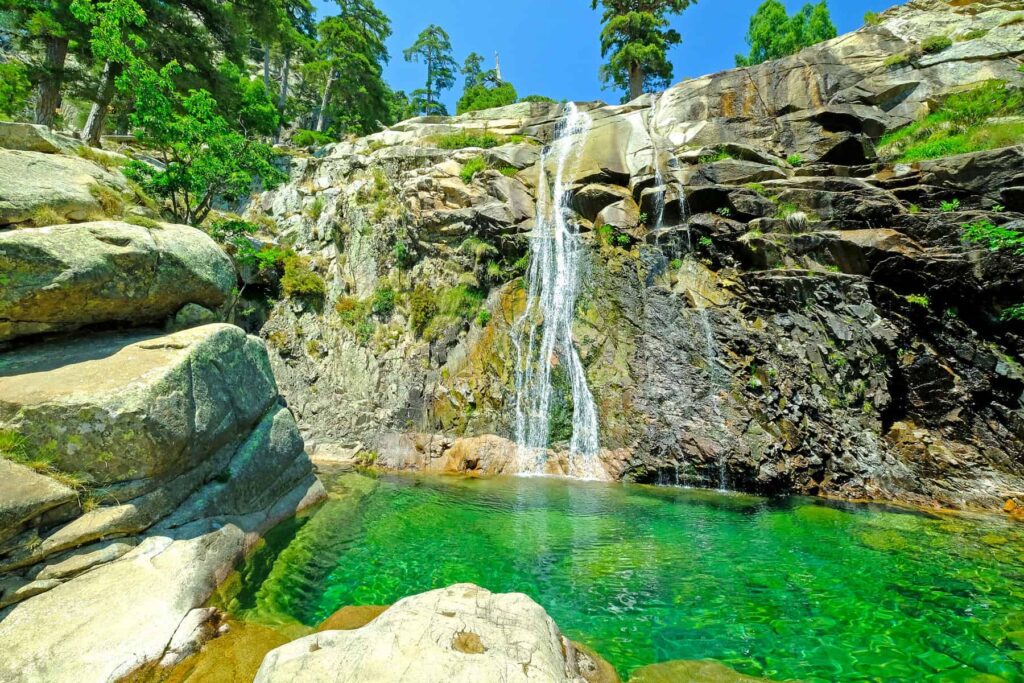
FRESHWATER ATTRACTIONS
CORSICA
Corsica’s wild rivers are the main draw for many visitors, offering an aquatic paradise of emerald waters, natural swimming pools, and virgin landscapes. Within its compact territory lies a remarkable network of pristine, cascading torrents surrounded by verdant scenery that remains luscious even in summer. Every location provides fabulous opportunities for numerous outdoor activities such as swimming, picnicking, hiking, canyoning, or kayaking. Among the most iconic valleys are Asco, Restonica, Tavignano, Cavu, Solenzara, Fango, Travo, and Figarella in Balagne. Each one is unique in its distinct character and scenery, making Corsica’s rivers a true hidden gem of the Mediterranean.
The island’s lakes are equally captivating. Lake Nino, a high-altitude heaven where wild horses roam freely, is considered one of Corsica’s natural wonders. Lake Creno enchants visitors with its mountain setting and delicate waterlilies, while Tolla offers tranquil conditions for canoeing. Lakes such as Melo, Capitello, and Bastani impress with breathtaking views and dramatic settings. On the east coast, the serene lagoons of Diane and Urbinu shelter wildlife and produce high-quality shellfish later served in Corsican restaurants.
TRAVELLER’S COMPANION FOR A TRIP TO CORSICA – GRAB YOUR EBOOK!
33 Natural Pools and Waterfalls in Corsica
Descriptions – Directions – Coordinates
SARDINIA
While Sardinia is most famous for its sublime beaches and marine activities, it also offers enjoyable freshwater experiences for those interested in exploring beyond the coast. Several rivers provide bathing opportunities in natural pools, including the second longest watercourse, Flumendosa, which eventually reaches the sea in Muravera.
When exploring Sardinia, you will also encounter tranquil lakes and picturesque lagoons where diverse wildlife, including beautiful pink flamingoes, finds shelter. Lake Omodeo Italy’s largest artificial inland lake offers boat trips and canoe rides. Another delightful place to reconnect with nature is Lago Baratz near Argentiera, the only natural freshwater lake on the island. This quiet spot is a haven for birdlife and offers scenic views from a 3-kilometre path encircling it.
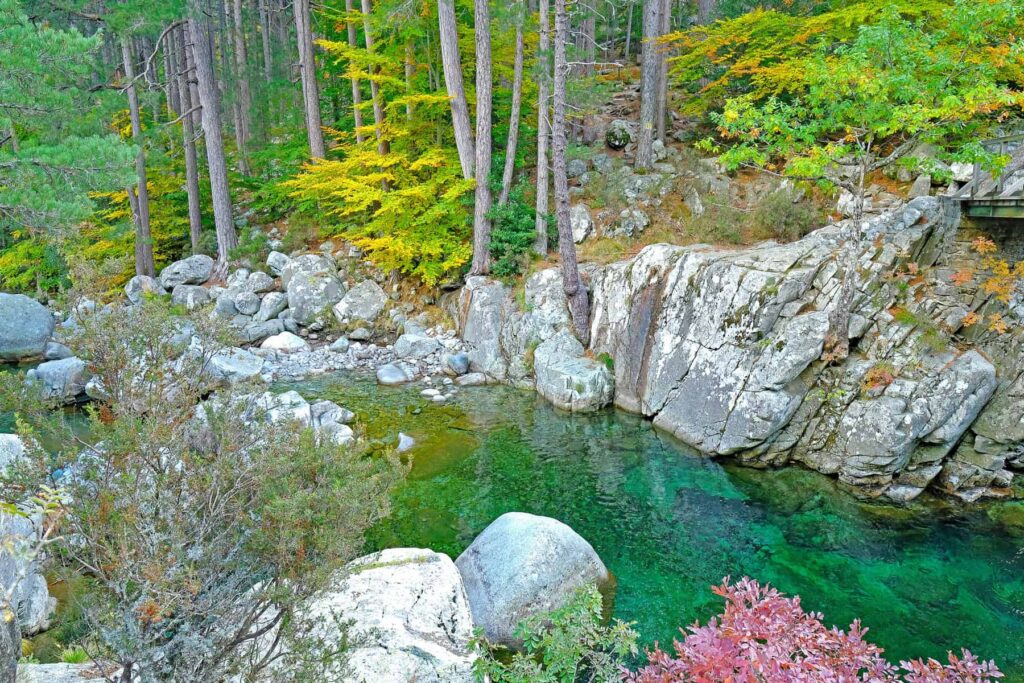
FORESTS
CORSICA
Corsica is renowned for its majestic old forests that cover nearly 60% of the island, making it one of France’s most heavily forested regions. In the coastal regions below 600 meters, vegetation is dominated by the perfumed maquis (Corsican scrubland) laced with holm oak and cork oak. The temperate zone, up to 1800 meters, boasts beautiful pine and oak woodlands, but also a glorious chestnut grove in Castagniccia. Higher elevations are home to wind-ruffled sub-alpine forests of green alder, juniper, and white birch, whereas immense pine trees carpet the sunny south-facing slopes.
In summer, these beautiful shaded areas offer cooler air, attracting visitors tired of the coastal heat. The most notable Corsican forests are Vizzavona, Aitone, Bonifatu, Ospedale and Asco. Innumerable hiking trails cross these woodlands, including the famous GR20 or Mare è Monti. Travellers can also enjoy canyoning, accrobranche (adventure parks), and wildlife photography, particularly in autumn when nature explodes in a stunning medley of golden hues.
SARDINIA
Sardinia’s woodlands are diverse and ecologically significant for the local habitats. They include Mesogean Pine Forests (north Sardinia), Holm Oak Forests (Supramonte, Barbagia), and Cork Oak Forests (Gallura and Montiferru), providing shelter for various species of flora and fauna. Historically, deforestation was prevalent on the island, but recent conservation efforts have substantially increased forest cover. Today, about 50% of Sardinia’s territory is wooded, with a focus on preserving endemic biodiversity.
The most beautiful forests are Bosco di Sas Baddes, Supramonte’s treasure with centuries-old trees, one of Europe’s largest holm-oak territories, Bosco di Montes near Orgosolo, an ancient oasis for fauna and flora, Foresta di Montarbu, Sardinia’s largest forest, located in Seui, and the southwestern Foresta Demaniale dei Sette Fratelli, which safeguards the enigmatic nuraghi (neolithic settlements) and offers great hiking.

SCENIC DRIVES
CORSICA
Due to its incredibly diverse scenery brimming with awe-inspiring, dramatic landscapes, Corsica has some of the best scenic drives in Europe. The roads wind through iconic locations, where every turn reveals a new arresting vista, from azure seascapes and soaring rocky peaks to exuberant river valleys. Although roads are very well maintained, they are narrow with hairpin bends, requiring drivers to maintain low speeds, typically around 35-40 km/h, to navigate safely.
But the reward is plentiful. On your road trip, you will encounter not only renowned natural landmarks, mountain passes, and deep canyons, but also charming villages and cultural treasures giving testimony to Corsica’s fascinating past. The best scenic routes include the Bavella drive, the ride around Cap Corse, Scala di Santa Regina Canyon, the Calanches de Piana drive, or river valley routes in Asco or Restonica. In this post, you will find tips on how to drive safely in Corsica with ideas for the most unforgettable rides.
SARDINIA
With its flatter terrain and more open spaces, Sardinia offers a different driving experience, appealing to travellers who enjoy beautiful coastal scenery and expansive views. The main roads are generally well-maintained, but smaller, mountain routes can be narrow and winding. The littoral regions will grant you quintessentially Mediterranean panoramas filled with glistening turquoise water seascapes. This endless succession of pretty bays is dotted with charming towns exuding Italian charm, where you will find plenty to see and do.
The most attractive stretches ideal for scenic road trips are the Alghero-Bosa coastal route, a favourite among bikers, the Cagliari-Villasimus panoramic road, the Fontanamare-Nebida-Masua itinerary, which offers dramatic views of the towering Pan di Zucchero rock formation, Baunei-Dorgali, exposed to the rugged scenery of the Supramonte mountains, and Chia-Teulada in southwestern Sardinia, featuring sublime views of the Mediterranean sea.
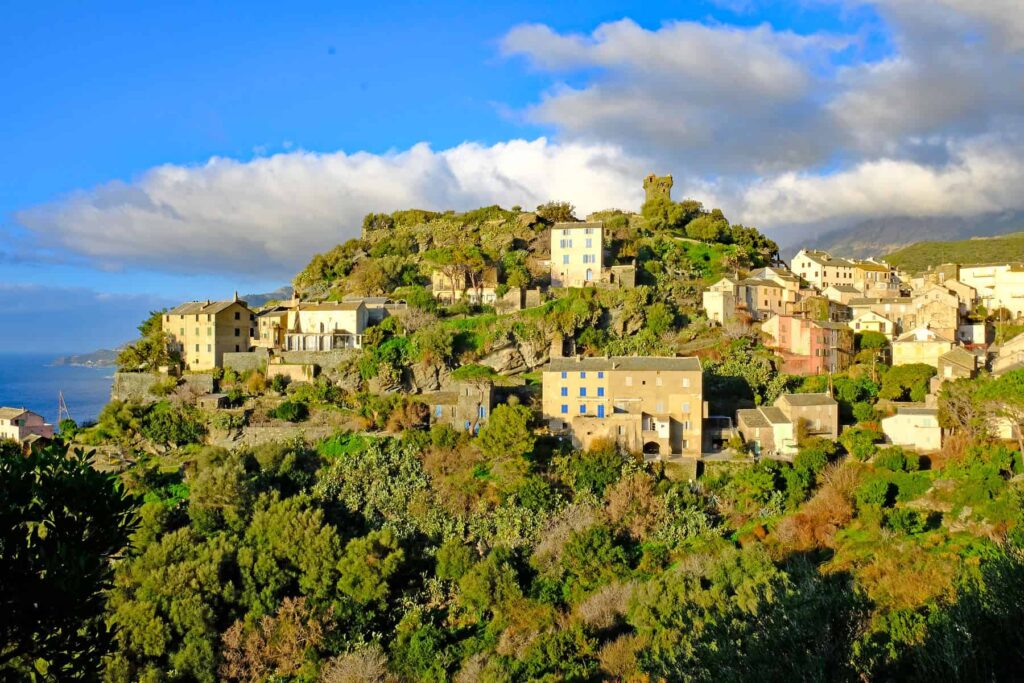
TOWNS AND VILLAGES
CORSICA
Apart from spectacular nature, Corsica is known for its fascinating cultural patrimony waiting to be discovered in the island’s authentic, history-steeped towns and villages. Many feature well-preserved medieval and Genoese architecture, including citadels and watchtowers, and religious monuments. Often perched on hilltops or cliffs, they offer stunning Mediterranean views. Small, authentic villages of the island’s mountainous interior provide a glimpse into traditional Corsican life, with local markets, cuisine, and folk arts.
Ajaccio, Corsica’s vibrant capital city, is famous for being the birthplace of Napoleon Bonaparte. It also serves as the island’s hub for culture, shopping and tourism. Other important towns are Bastia in the north, the charming resort of Calvi in Balagne, Porto Vecchio, with its celebrity-visited paradisiacal beaches, and Bonifacio, a medieval pearl perched atop tall limestone cliffs. Corte and Sartène, known for their rich cultural and historic significance, ooze the Corsican soul.
SARDINIA
Sardinia’s large territory is home to numerous charming towns and villages, each offering unique experiences. They are often very attractive architecturally and pulse with life. Interesting museums, cultural events, lively bars, and restaurants provide engaging alternatives for days when the beach is not on the agenda.
Some towns, like Posada, have ancient origins, with evidence of human presence dating back to the Neolithic period. Others showcase diverse architectural styles- Bosa captivates with its medieval charm and pastel-coloured houses lining narrow alleys, while Porto Torres features impressive Romanesque design. Alghero stands out for its distinctive Catalan heritage, complemented by superb seafood and beautiful beaches. Cagliari, Sardinia’s sun-drenched capital, exudes a captivating blend of medieval allure and vibrant Italian atmosphere, surrounded by pristine white-sand lagoons. In Pula, you can admire ancient Roman ruins, whereas Castelsardo will seduce you with its perched setting and a famous citadel.
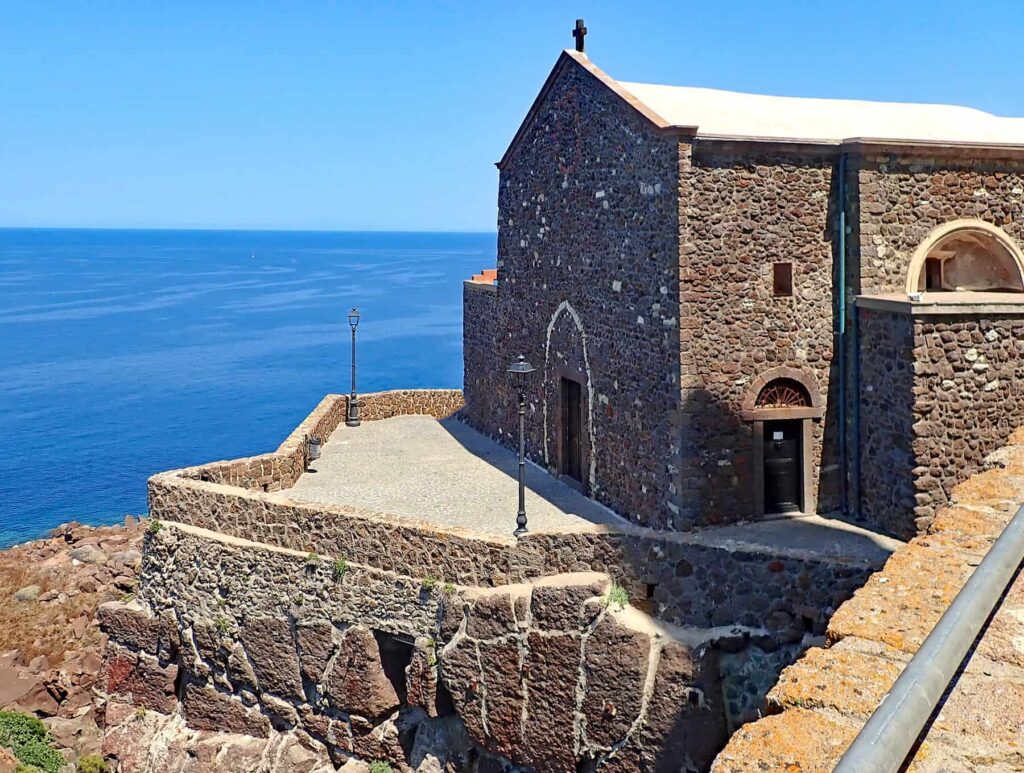
NOTABLE CULTURAL ATTRACTIONS
CORSICA
- Citadel in Bonifacio – Perched on a limestone promontory overlooking the Mediterranean Sea, it dates back to the 9th century.
- Genoese Towers – Scattered along the coastline, they are remnants of Corsica’s strategic defensive past and offer stunning views of the coast.
- Filitosa – A fascinating archaeological site known for its megalithic structures from the Neolithic era. It showcases statues-menhirs offering insights into ancient Corsican civilisations.
- Musée Fesch in Ajaccio – The museum houses an impressive collection of European paintings, including works by Italian masters and a notable collection of Napoleonic artefacts.
- Palais des Gouverneurs / Musée de Bastia – It offers a mix of contemporary art and historical exhibits, providing insights into Bastia’s past and its cultural significance.
- Citadel in Calvi – Built in the 15th century, this massive fortification affords panoramic views of the bay and marina. It is home to the Cathedral of Saint John the Baptist.
- Musée de la Corse in Corte – Located in the heart of Corte’s citadel, the museum explores Corsica’s history and culture through exhibits on traditional life, handicrafts, and historical artefacts.
SARDINIA
- Su Nuraxi di Barumini – A renowned ancient nuraghi complex, one of the best-preserved examples of Sardinia’s Bronze Age culture.
- Parco Archeologico Naturalistico di Santa Cristina – It features a 3000-year-old well temple and Bronze Age ruins, providing insights into Sardinia’s ancient past.
- MURATS (Museo Unico Regionale dell’Arte Tessile Sarda) – Dedicated to Sardinian textiles, this museum showcases the island’s rich handicraft traditions.
- National Art Gallery in Cagliari – It offers an extensive collection of Sardinian paintings and artefacts, highlighting the island’s artistic heritage.
- Nivola Museum – The museum explores Sardinian art and culture. It benefits from a beautiful hillside setting above the village of Orani.
- Porto Flavia – An arresting industrial archaeological site in Iglesias, showcasing Sardinia’s mining history.
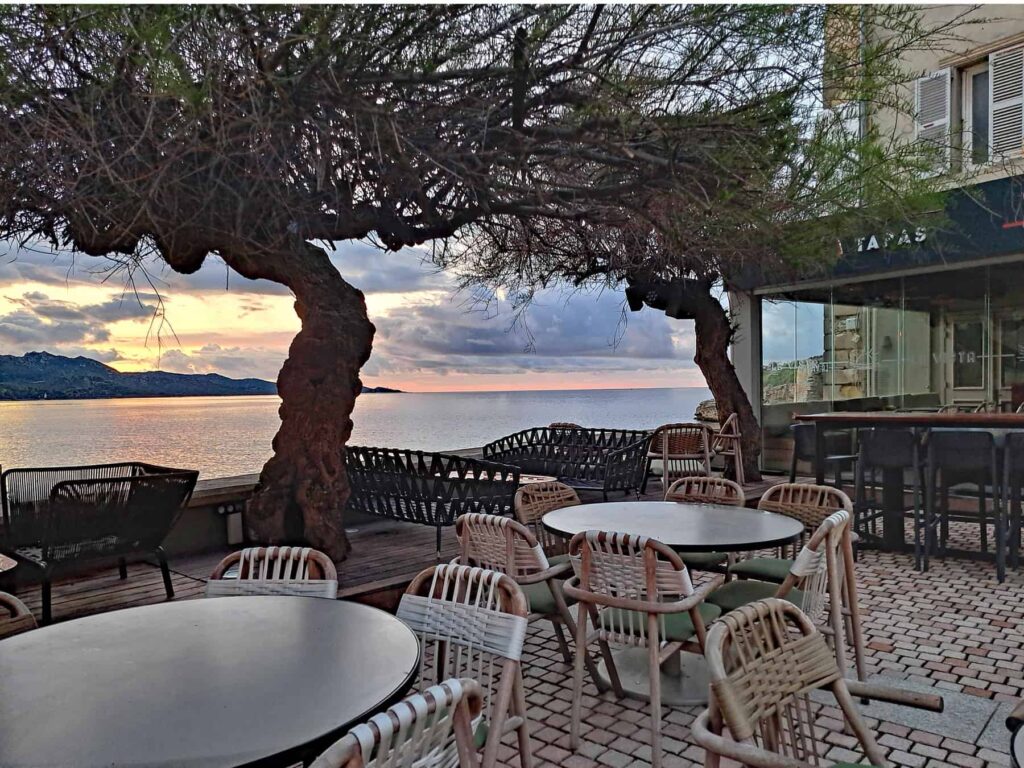
GASTRONOMY
CORSICA
Corsican cuisine blends Mediterranean flavours with French and Italian influences, emphasising fresh local produce and traditional techniques passed down through generations. Characterised by hearty, earthy dishes, it reflects the island’s rugged landscape and pastoral heritage.
Key ingredients include chestnut flour, used in traditional polenta and cakes, and local meats like wild boar and lamb. Charcuterie, such as coppa, lonzu or figatellu is gastronomy’s staple, while cheeses, like brocciu, are integral to many recipes. In winter, Corsicans serve peasant-style soups, whereas sunny summer days are often accompanied by seafood dishes like aziminu, seasonal vegetables and juicy, perfectly ripe fruit.
Corsican desserts include fiadone, a cheesecake made with brocciu cheese, and canistrelli, traditional dry biscuits often flavoured with anise or lemon. Chestnut-based desserts like chestnut flan are another popular post-main course option.
Corsica offers a range of dining options for holidaymakers, from low-key brasseries to Michelin-starred restaurants, but as a rule of thumb, eating out on the island is fairly pricey, more so than in Sardinia. Traditional street food like quiches, crepes, migliacci, delectable pizzas or set lunch menus offer an affordable option for tourists on a budget. Read more about prices in Corsica.
SARDINIA
Sardinian cuisine is known for its simplicity, authenticity, and rich history, echoing the island’s peasant and seafaring traditions. It combines agricultural and maritime influences, with dishes often featuring whole grains, dairy, vegetables, fruits, and legumes. Served meats include mutton, beef, game, or even horsemeat and donkey meat. On the coast, you will find lobster, tuna, sea bass and sardines. Popular on the island almond or cheese-based pastry or a fresh fruit salad conclude the meal.
Key ingredients in Sardinian cooking include pecorino sardo cheese, bottarga (cured mullet roe), and carciofo spinoso (artichoke). Traditional dishes are pane carasau (thin wafer bread), pane frattau (bread soaked in tomato sauce and egg), culurgiones (potato-filled ravioli), malloreddus (Sardinian gnocchi with various toppings), and porceddu (roasted suckling pig).
The Italians love to eat out and celebrate their time with friends and family. Prices vary, with casual eateries offering inexpensive yet delicious meals. High-end establishments, especially in areas like Costa Smeralda, can be much more expensive. For the best culinary experience, seek out smaller venues away from the top tourist spots. You will fall in love with the variety of local flavours and the warm atmosphere.
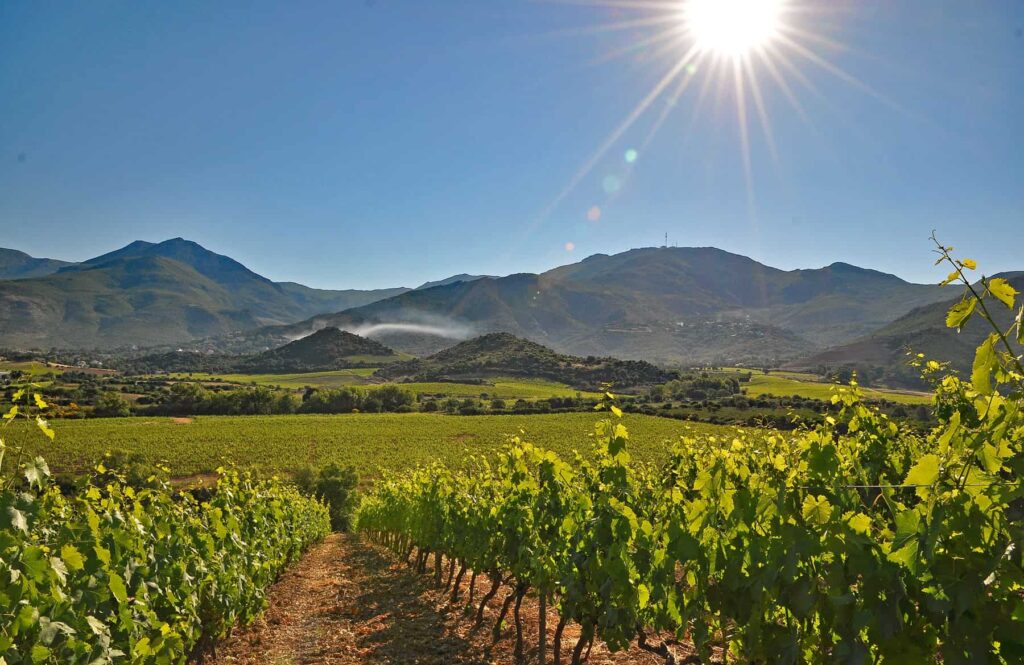
WINE
Wine enthusiasts, and oenophiles, if you are planning a visit to one of the islands to explore the fascinating world of new flavours, pick Corsica first. While both Corsican and Sardinian wines have their unique characteristics and strengths, it is Napoleon’s homeland that stands out as one of the most interesting wine destinations in the Mediterranean.
CORSICA
Within nine AOC regions (appellations), you will find outstanding wines made of indigenous grape varieties such as Vermentinu, Niellucciu, and Sciacarellu, or the sweet Muscat du Cap Corse. Often produced in small quantities, they reflect Corsica’s diverse terroir, revealing distinct aromas and flavours, great complexity and authenticity. As champions in organic production, local artisans pride themselves on a sustainable, healthy approach to cultivation and winemaking. On your Corsica bucket list, include Patrimonio AOC, the island’s oldest appellation and the hotspot for excellence in vini-viticulture. To match the Corsican wines with food for a mouthwatering combo, read this post. The Corsica Wine Guide e-book, presenting the best producers and wines, will help you navigate the exciting world of local flavours and plan an unforgettable wine tour of the island. For a laid-back, carefree culinary experience, you can book a guided wine tour in Patrimonio or a winetasting in Calvi.
Wine lover’s companion for a trip to Corsica – Grab your ebook!
Corsica Wine Guide – from vine to glass
✓ 9 wine regions
✓ 74 producers
✓ 125 wines
SARDINIA
If you pick Sardinia as your preferred vacation destination, you will not be disappointed with its rich wine offering either. The island’s wine tradition, which spans thousands of years, creates remarkable diversity, translating its varied terroir.
Key grape varieties include Cannonau, a ruby-coloured, dry red; Vermentino, an aromatic white great with fish; Nuragus, perfect to accompany the local seafood; Carignano, a full-bodied wine to match meat dishes, or Monica, a lighter cherry-hued red.
The Sardinian terroir is varied, featuring diverse soil structures (volcanic, granitic, limestone, and clay), allowing different grape varieties to thrive in specific zones. Hot, dry summers and proximity to the sea impart distinct minerality to local wines, producing interesting and unique flavour profiles. Sardinia’s reputation as a must-visit oeno-destination continues to grow, and engaging guided wine tours with tastings and vineyard visits offered by local cellars guarantee a deep dive into the island’s gastronomic legacy.
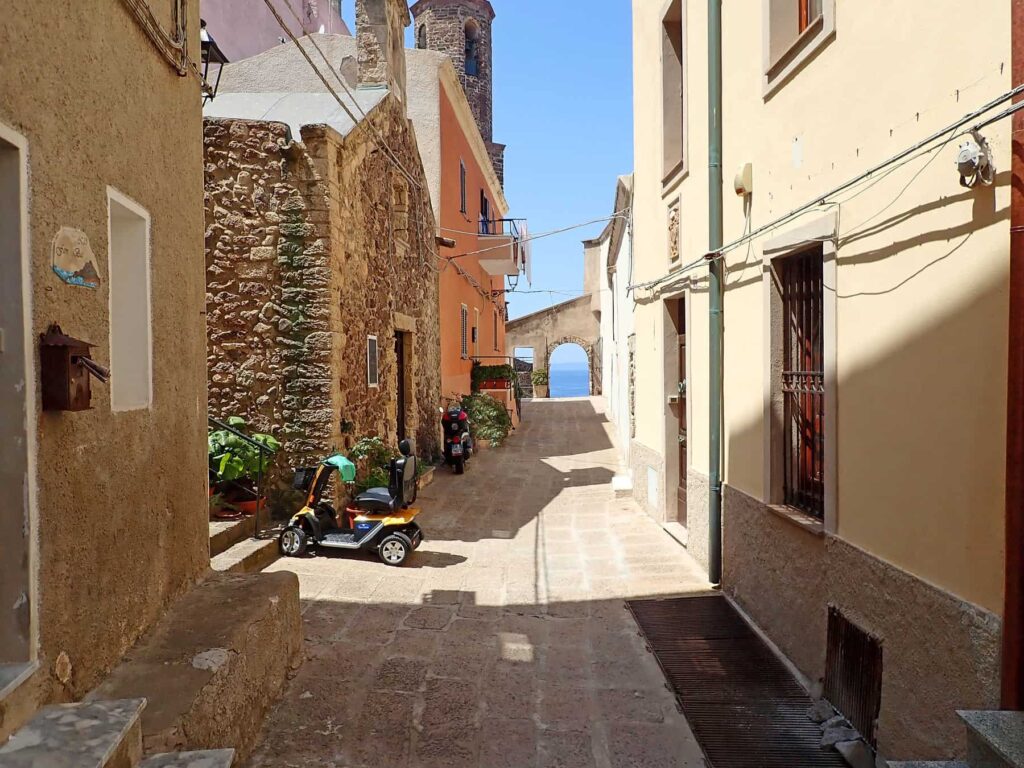
VIBE
CORSICA
Visitors to Corsica can expect a low-key, peaceful, close-to-nature escape. While the island does feature some nightclubs, particularly in larger towns, it is not known for a vibrant nightlife scene. Instead, travellers are drawn to Corsica’s tranquil atmosphere and relaxed Mediterranean lifestyle, which is warmly enhanced by the hospitality of its residents.
Coastal towns offer a lively and convivial ambience, while the inland regions are defined by a serene, secluded environment where you can soak up the healing powers of Corsica’s pristine nature. Glitzy areas like Porto Vecchio, Bonifacio, Ile Rousse or Saint Florent guarantee a more refined, glamorous vibe, ideal for those seeking high-end amenities, exclusive experiences and understated luxury.
SARDINIA
In Sardinia, expect a balanced mix of the sophisticated and informal, the serene and exuberant, but always close to nature and the island’s rich cultural legacy. The remote hideaways will grant you lazy days spent basking in the Mediterranean sun and evenings filled with delectable specialities of Sardinia’s traditional cuisine. The sleepy inland villages provide a tranquil setting where you may explore ancient ruins and the nuraghi stone structures.
For those seeking fun, bustling coastal towns like Porto Cervo and Olbia offer vibrant nightlife with sunset aperitifs, beach parties hosted by DJs, and dancing under the stars. Italy’s vibrant culture is also evident in large social gatherings to celebrate important festive days with music and parades. Local bars and trattorias fill up with visitors of all ages to enjoy shared moments of conviviality. While Corsica is primarily favoured by the Europeans, Sardinia generally attracts a more international crowd.
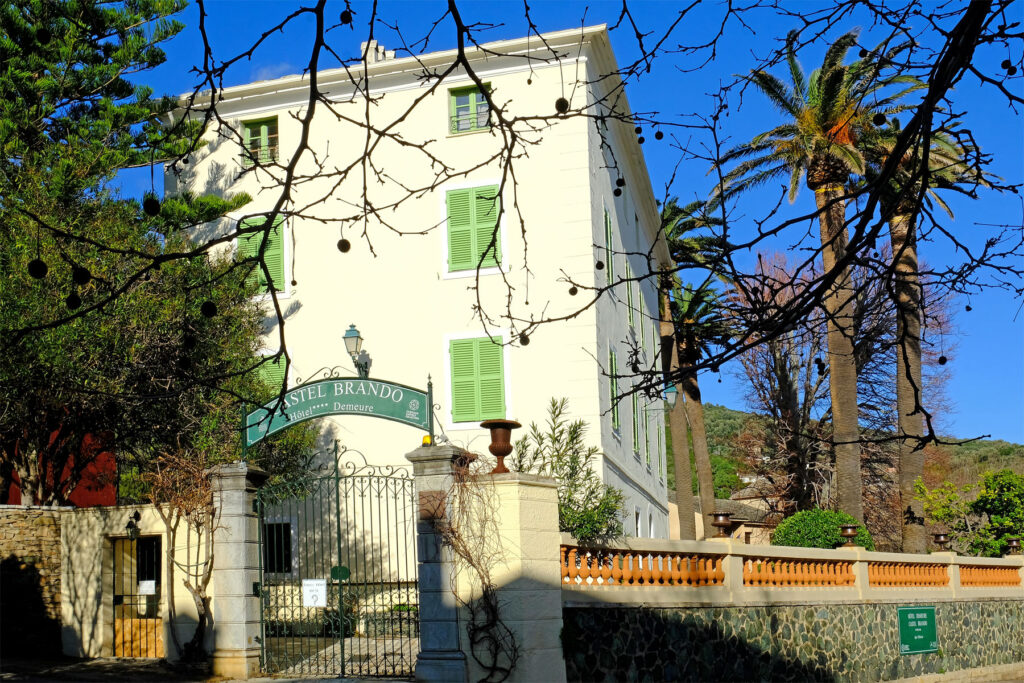
ACCOMMODATION
CORSICA
Due to Corsica’s considerably smaller size and a strong commitment to environmental preservation (the Regional Natural Park of Corsica covers 40% of its surface), accommodation options are more limited than in Sardinia. This makes early booking, ideally at the start of the year, essential to avoid disappointment.
The accommodation base is dominated by discreet properties, with no large, bustling resorts or high risers. Instead, lodgings are well-integrated into the natural surroundings. Beach areas are often protected, retaining their unspoiled allure. Options range from fairly inexpensive self-catering apartments to 5-star luxury hotels like the celebrity-favoured Grand Hôtel Cala Rossa & Spa Nucca. Corsica is also a paradise for campers, offering numerous attractive, well-equipped sites in scenic locations.
The most popular areas to stay include Calvi, Porto Vecchio, Ajaccio, and Bonifacio. Air conditioning in rooms is commonplace due to hot summer weather. Sustainable, eco-friendly options are also abundant. Check this post to find the most attractive places to stay in Corsica, or read this article focused on the best locations for couples.
SARDINIA
Sardinia has a large selection of lodging options to suit various preferences and budgets, and is generally considered a more affordable destination than the neighbouring Corsica. Those seeking comfort and amenities will undoubtedly find plentiful choices, from luxury hotels to mid-range accommodations. Costa Smeralda is the ultimate VIP playground, sheltering within its pristine coastline the most exclusive residences.
Sardinia’s larger resorts with developed infrastructure and all-inclusive facilities are particularly appealing to families with young children. Those who prefer intimacy can choose from a good range of vacation homes and apartments, many situated near picturesque beaches and equipped with all the essential modern conveniences.
For a more authentic experience, visitors may consider agriturismos and eco-friendly hotels, which provide an opportunity to connect with local traditions and nature. Remember to verify the availability of air conditioning when booking inexpensive accommodation in Sardinia.
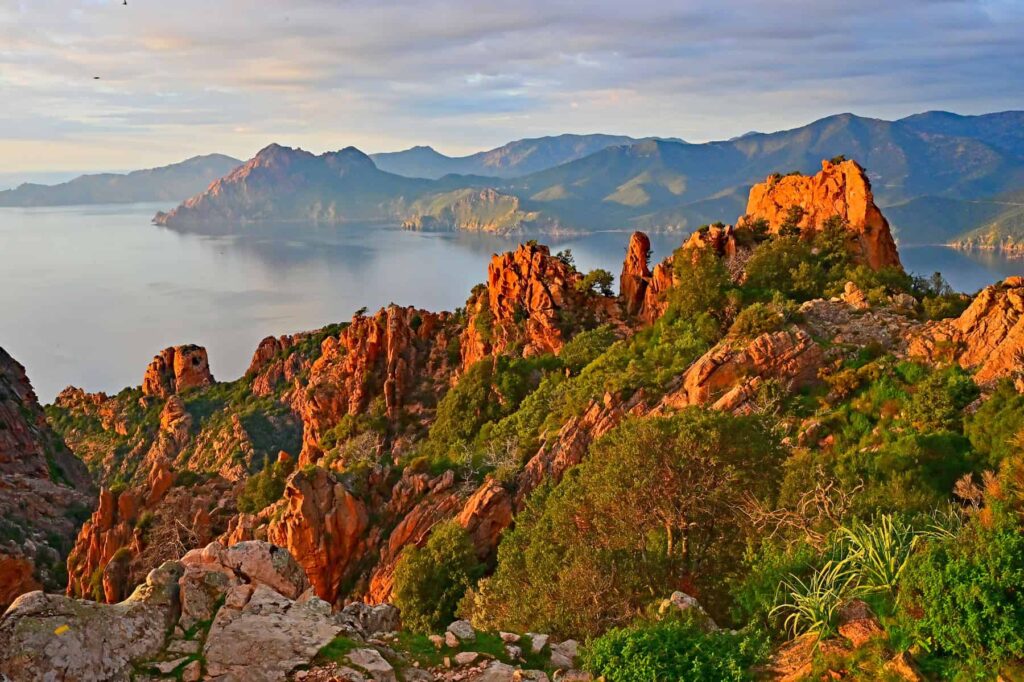
GETTING THERE
Both islands can be reached either by air or by sea. Flying is the quickest option, although viewing Corsica or Sardinia from the boat adds to the journey’s charm. I recommend booking your flight and ferry tickets early to take advantage of the best deals and discounts. Fares can vary depending on the route, operator, season (the highest in July and August), and even time of the day.
Corsica’s four airports are in Ajaccio, Bastia, Calvi and Figari, while Sardinia receives planes in Cagliari, Olbia and Alghero. There are both year-round and seasonal direct connections to the islands departing from various European cities.
If you prefer to reach Corsica or Sardinia by sea, you can book a crossing with one of the maritime transport providers. Sailings depart from ports on the French or Italian mainland. Corsica is served by Corsica Ferries, Moby Lines, Corsica Linea, La Méridionale and Ichnusa Lines. Sardinia-bound operators include Tirrenia, Moby Lines, Sardinia Ferries, Grandi Navi Veloci, and La Méridionale. Both islands are linked by a daily connection between Bonifacio in south Corsica and Santa Teresa Gallura in north Sardinia. The crossing takes only 50 minutes.
To learn how to arrive in Corsica, with detailed routes, dates, and operators, consult my post Visiting Corsica – how to get there. If you wish to book your Ferry tickets with Corsica Ferries – Sardinia Ferries, you will find detailed information and practical tips in this article Ferries to Corsica – practical guide to booking your crossing with Corsica Ferries.
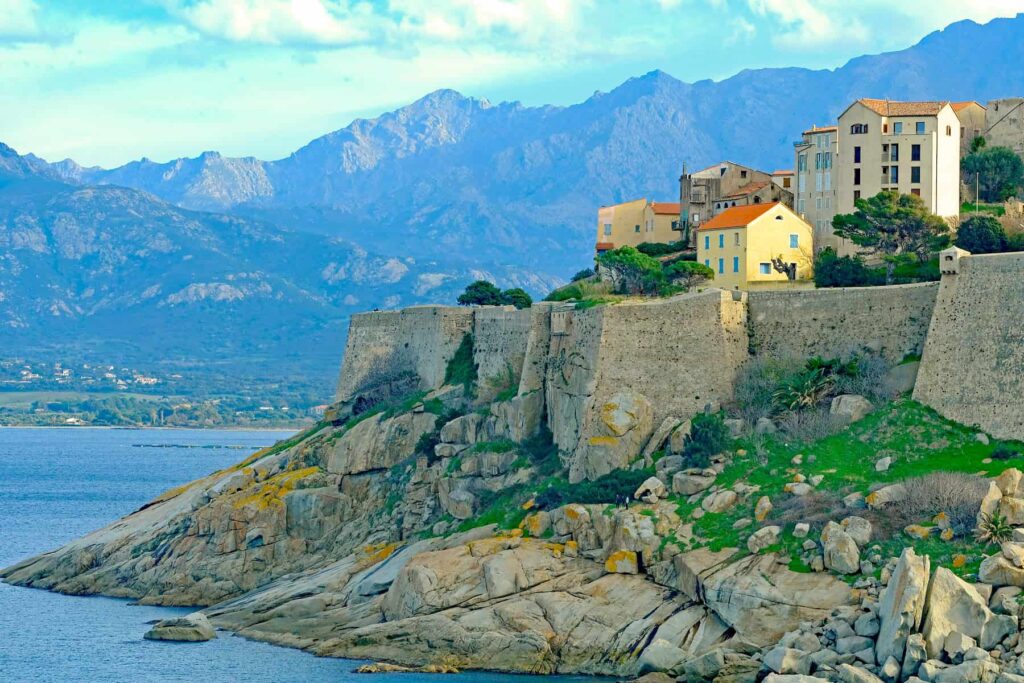
TRAVEL COSTS
For both islands, travel costs vary depending on the season, means of transport and accommodation type. Booking in advance, especially during off-peak months like January, February, or March, can help reduce costs.
Sardinia generally offers a more budget-friendly experience for tourists compared to Corsica, mirroring the broader cost differences between Italy and France. The most significant price disparities are evident in grocery costs, restaurant meal prices, and budget accommodation options (mid-range and luxury lodging costs are comparable). Expenses for guided tours and popular activities, such as scenic boat trips, tend to be similar on both islands. Travel costs, including flights and ferry services to reach either destination, are also similar.
With thoughtful planning and early bookings, visiting Corsica on a budget is entirely achievable. In the Corsica money guide, I provide a detailed overview of holiday costs along with practical tips to help you enjoy the island without overspending.
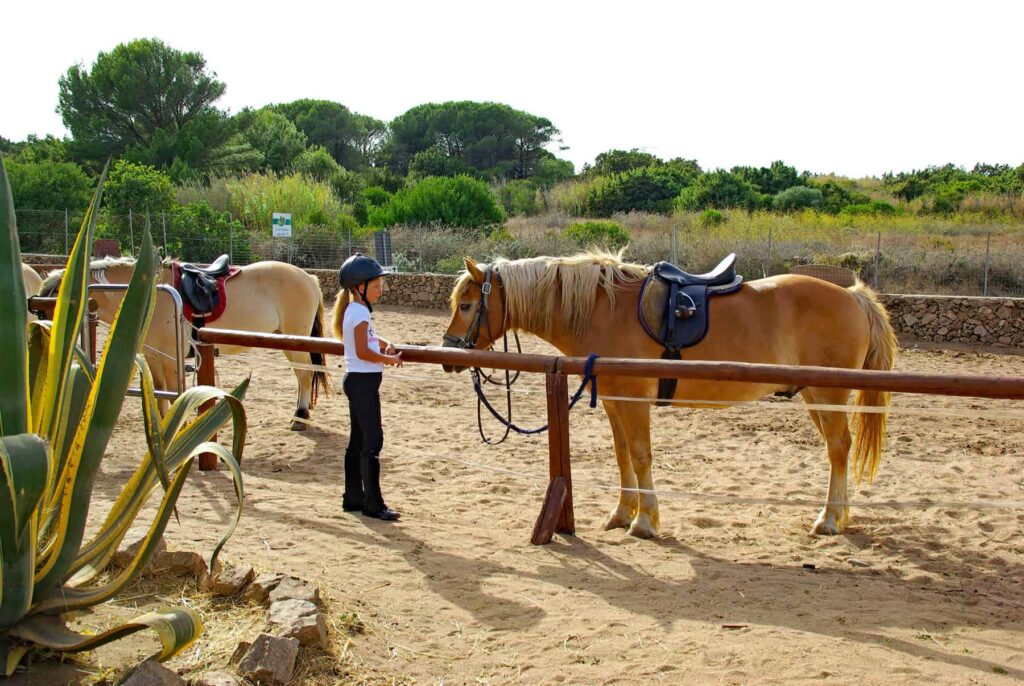
CORSICA AND SARDINIA WITH KIDS
CORSICA
Family is central to Corsican culture, and children are universally cherished. From a very young age, kids are encouraged to explore the island’s captivating nature, enjoying a great deal of freedom in its safe surroundings.
Active families visiting Corsica will appreciate an incredibly diverse range of adventures that can be experienced each day. Outdoor leisure opportunities include watersports, canyoning, river swimming, cycling, horse and donkey riding, or hiking. Most of Corsica’s beaches are child-friendly, featuring clear waters, gentle access, and delicate white sand. The areas of Porto Vecchio, Calvi, and the bay of Ajaccio, with their paradisiacal coastline, are the preferred choices for longer family stays. Additionally, numerous adventure parks allow children to climb trees and play in nature.
Teenagers may engage in exciting cultural and educational experiences such as visits to open-air museums, prehistoric sites and vibrant festivals, such as the popular Calvi on the Rocks in summer. While Corsica doesn’t have large resorts specifically designed for family entertainment, many hotels and campsites offer well-planned recreational facilities for the young ones, including pools, albeit in a more understated way. Check my post Best things to do in Corsica with children to find the most attractive family-friendly activities and experiences in Corsica.
SARDINIA
Just as in Corsica, children are particularly adored in Sardinia, being at the centre of family gatherings and celebrations. Strong intergenerational bonds and close relationships are nurtured, with an emphasis on traditional values.
Holidaymakers with children will experience the same type of affection for their offspring, who will be welcomed and looked after in hotels, restaurants or cultural venues. For families with babies and toddlers, Sardinia’s scenic shoreline abounding with safe, shallow lagoons is heaven. Kids can enjoy all kinds of fun water activities suitable for all ages. Other attractions include theme parks, such as Sardegna in Miniatura near Barumini, the Aquarium in Alghero or Cala Gonone, numerous castles, and prehistoric sites.
Outdoor pursuits encompass hiking in nature reserves, biking, horse riding, and diving. Adventure parks and water parks, such as Sardegna Avventura Park on the northeast coast and Aquadream Water Park on Costa Smeralda, guarantee fun and adrenaline rush for children, teens and adults.

LUXURY TRAVEL
Corsica and Sardinia are some of the best destinations for luxury travel, offering a range of exclusive experiences and accommodations. On both islands, you will find numerous luxury hotels that provide top-quality service, beautiful settings, and exclusive amenities.
CORSICA
In north Corsica, regions of Calvi, Ile Rousse, and Saint Florent are the most popular high-end locations, offering outstanding luxury hotels like La Signoria, Hotel La Villa, Casa Paradisu, Hotel La Roya, or Hotel Demeure Loredana.
South Corsica’s top upscale hotspots are Porto Vecchio, Bonifacio, and Ajaccio, with the best high-end venues being Grand Hôtel de Cala Rossa, Les Bergeries de Palombaggia, Casadelmar, Hotel & Spa Version Maquis Citadelle, U Capu Biancu, Sofitel Golfe d’Ajaccio Thalassa Sea & Spa, Hôtel Le Maquis, and Hotel Marinca.
Corsica also boasts a wide variety of luxurious tours and attractions for discerning travellers. The most popular activities are focused on the island’s paradisiacal coastal pleasures and they include yacht or catamaran excursions (with private sea trips available), Bonifacio cruises, and Scandola Nature Reserve excursions, but you may also find entertaining cultural experiences such as food tours and wine tastings.
SARDINIA
Sardinia’s luxury travel is concentrated in several key areas, with the world-famous Costa Smeralda in the northeast being the most popular. There are numerous top-rated hotels, but a few stand out: Rommazino A Belmond Hotel, Hotel Cala di Volpe, Cervo Hotel, L’Ea Bianca Luxury Resort, Hotel Pitrizza, and Grand Relais Dei Nuraghi.
The stunning Mediterranean scenery of southern Sardinia has equally evocative properties, boasting world-class amenities. For the ultimate luxury, visit Forte Village Resort – Il Castello in Santa Margherita di Pula, Palazzo Doglio in Cagliari, Falkensteiner Resort Capo Boi in Villasimius, La Villa del Re in Castidas, and Baia Di Chia or Conrad Chia Laguna in Chia.
The island provides numerous exclusive attractions while several bespoke travel agencies create personalised luxury itineraries, including gourmet meals and private guided tours. Other interesting activities include yacht trips to the Maddalena Archipelago, catamaran excursions, motorboat tours, helicopter tours for breathtaking views, and Ferrari driving experiences along scenic coastal roads.
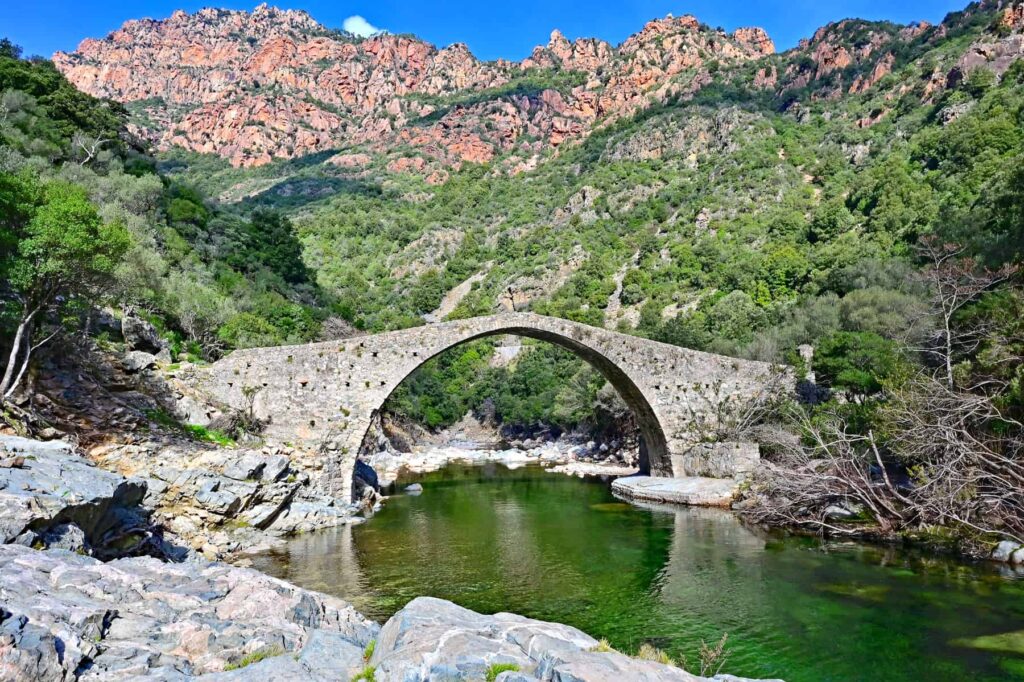
SAFETY
Both Corsica and Sardinia are considered safe tourist destinations with low crime rates compared to other popular European regions. The islands, with their geographical isolation, exhibit a distinct social landscape where close-knit communities develop stronger relationships with neighbours, looking out for one another, and relying on mutual support and assistance in case of emergencies.
Families with children, solo female travellers, and seniors particularly appreciate Corsica’s or Sardinia’s welcoming, secure environment where a worry-free vacation is centred on exploration and relaxing, without unnecessary stress. When it comes to bigger cities, I would argue that Corsica has the edge in terms of safety, but that is my personal impression, possibly influenced by the fact that Sardinia is home to a considerably larger general population.
When visiting either island, employ standard safety precautions, keep your valuables secure and avoid leaving them unattended in the car. In my post about Corsica’s safety, I present the most common risks, including several natural hazards, with practical tips for the most enjoyable stay.
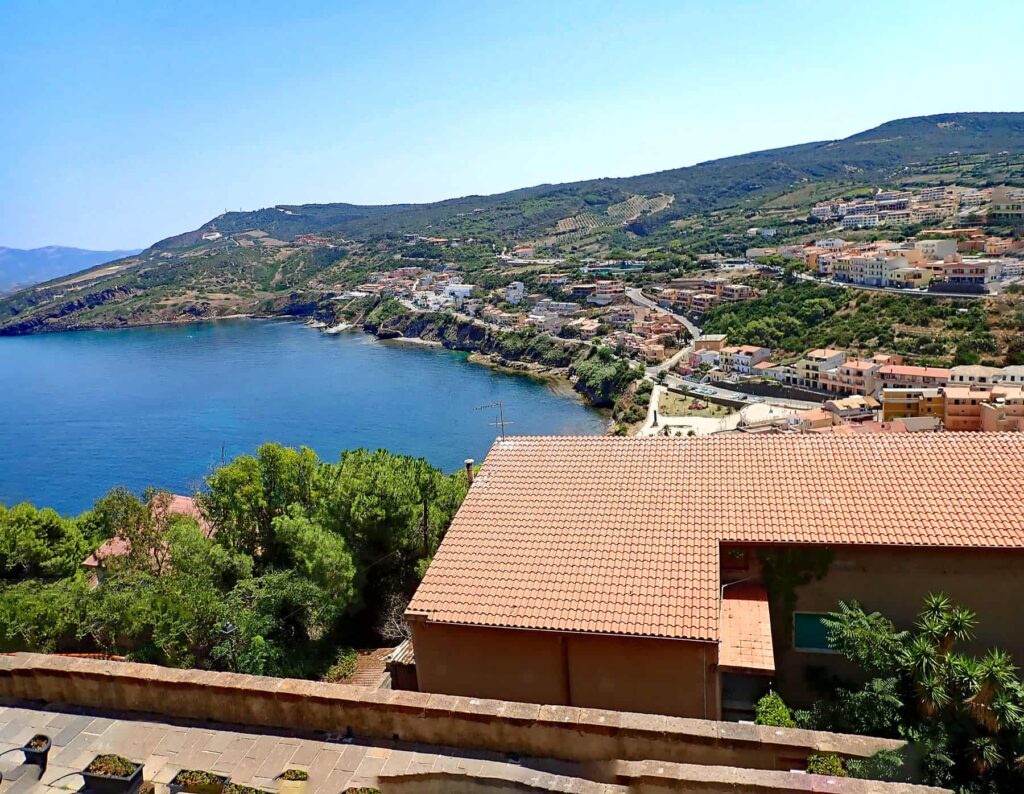
YOU MAY ALSO LIKE
- Where to stay in Corsica – best places and areas for your visit
- Corsica’s best beach hotels and top coastal locations
- Best places to stay in Corsica for couples
- Ferries to Corsica – practical guide to booking your crossing with Corsica Ferries
- Corsica – where to go and what to do
- 11 Charming Corsican villages that will steal your heart
- Visiting Corsica – how to get there
- Don’t expect this in Corsica – 20 surprising facts for visitors
- Is Corsica an expensive travel destination – money guide for visitors
- Getting around Corsica – do you need a car?
- Best things to do in Corsica with children
- 30 Summer fairs, festivals and events in Corsica
- 25 Instagram-worthy places in Corsica for stunning photos
- Top 3 destinations for a car-free holiday in Corsica
- Top 11 most beautiful places in Corsica
- 15 Hidden gems in Corsica – discover the island’s best-kept secrets
- Best time to visit Corsica
- Is Corsica a safe place to visit – travel advice and tips
- What to avoid in Corsica – 11 common mistakes
- 15 Best beaches in Corsica for lovers of sea, sun and sand
- Driving in Corsica – tips and scenic routes ideas
- Visiting Corsica in winter – the ultimate travel guide


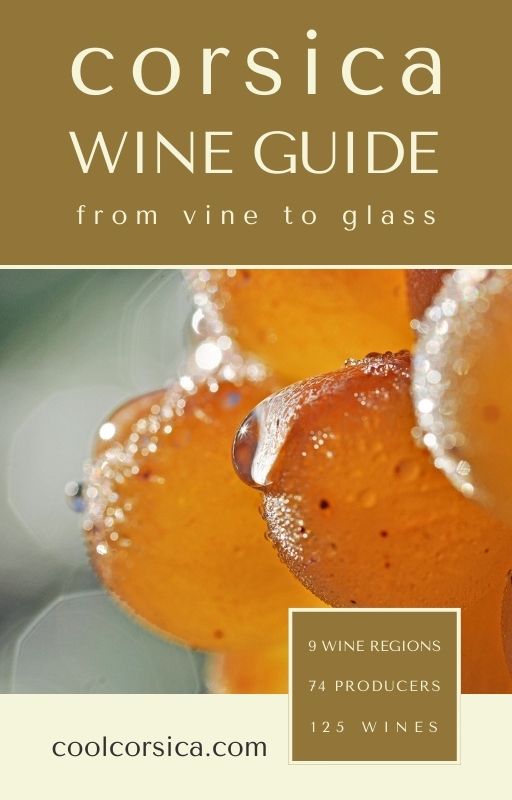
6 comments
Wspaniały, praktyczny przewodnik po Korsyce i Sardynii. Dziękuję:)
To ja dziekuje za moich uroczych czytelnikow:)
Artykuł petarda… !!!
Ile informacji i ciekawych porównań, ogrom pracy i ciekawych spostrzeżeń.
Karolina ty chyba nie śpisz cały czas coś piszesz 🙂
Twoja strona cały czas mnie zaskakuje…
Dzięki Twojej pracy podróż przez Korsykę była dla mnie przyjemnością i czułem się zaopiekowany i prowadzony za rękę… 🙂
A teraz jeszcze to mega porównanie obu wysp, które mnie osobiście totalnie zauroczyły, ale dzięki Twojej stronie chyba zaczynam się myślami bardziej kierować w stronę Korsyki 🙂
Bez informacji tam zgromadzonych i podanych jak na talerzu… na pewno nie odwiedziłbym wielu miejsc i dróg które robią robotę… dlaczego ?
Po prostu bym o nich nie wiedział… pominął i przejechał obok… 🙂 A żałowałbym teraz czytając artykuł… 🙂
Po Sardynii i Korsyce Lazurowe Wybrzeże wydaje się dla mnie mniej lazurowe i nie robi takiego wrażenia…
To wynik refleksji którą mam na świeżo i nie wyobrażam sobie nie wrócić w te strony w niedalekiej przyszłości…
Świat jest piękny ale do niektórych destynacji wraca się ponieważ, mają w sobie to coś… a taka na pewno bez cienia wątpliwości jest Twoja miłość…Korsyka 🙂
Już czekam na nowe redakcyjnie dzieło… ale bez pośpiechu… poczekam 🙂
Hej Tomku!
Dziekuje Ci za te mile slowa! Jestes kochany:) Ciesze sie ze moglam byc pomocna i ze Twoja cudowna wyprawa udala sie pomimo kiepskiej pogody. Teraz pora na obie wyspy w sloncu! Moj nowy artykul bedzie o plazach kolo Bastii, wiec jak widzisz szykuje kolejne destynacje do Twojej listy miejsc do odwiedzenia.
Pozdrawiam Cie serdecznie i wysylam korsykanskie slonce.
Karola
Great article, thank you.
Love your website.
Very informative and easy to plan a trip.